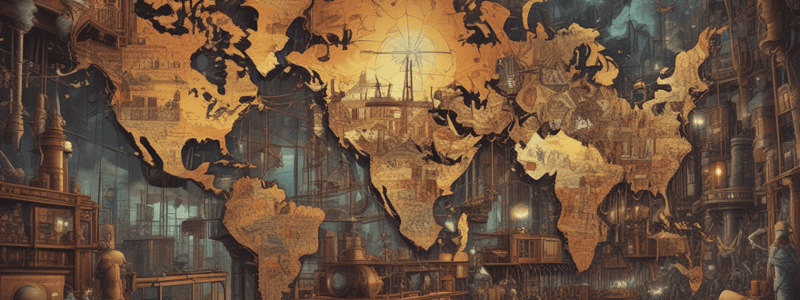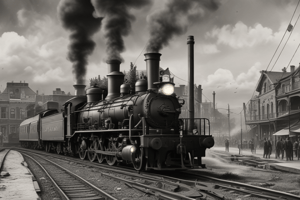Podcast
Questions and Answers
What was a consequence of the market revolution in the North?
What was a consequence of the market revolution in the North?
- A decrease in the demand for southern cotton
- The abolition of slavery
- A decline in the number of laborers
- The growth of massive textile mills (correct)
What was a result of the shift from subsistence farming to profit-oriented farming?
What was a result of the shift from subsistence farming to profit-oriented farming?
- An increase in self-sufficiency
- The growth of a new middle class (correct)
- A decrease in the number of farmers
- The abolition of slavery
What was a consequence of the market revolution for many American workers?
What was a consequence of the market revolution for many American workers?
- An increase in their wages
- An improvement in their working conditions
- Their entrapment in endless cycles of poverty (correct)
- Their promotion to managerial positions
What role did northern states play in the American slave system?
What role did northern states play in the American slave system?
What was a characteristic of the labor carried out by some workers, often immigrant women, during the market revolution?
What was a characteristic of the labor carried out by some workers, often immigrant women, during the market revolution?
What was a result of the market revolution on the economy?
What was a result of the market revolution on the economy?
Flashcards are hidden until you start studying
Study Notes
Market Revolution in the US
- The market revolution transformed the US economy, leading to the growth of factories, cities, and fortunes in the North.
- Farmers shifted from self-sufficiency to growing crops for profit, contributing to the expansion of the cash economy.
- A new middle class emerged, but this growth came at the cost of increasing the number of property-less workers and periods of economic depression (panics).
Impact on Labor
- Many workers, including immigrant women, faced long hours (13 hours a day, 6 days a week) and low wages, leading to cycles of poverty.
- Northern subsistence farmers became laborers dependent on market fluctuations and bosses.
- Slavery persisted, with northern textile mills fueling the demand for southern cotton and banks providing financing for the slave system.
Economic Growth and Inequality
- The market revolution sparked rapid economic growth, but also created a growing lower class and widening wealth inequality.
- The US became a nation of both free labor and slavery, with wealth and inequality existing side by side.
- The economy's growth brought both promise and perils, setting the stage for future challenges and conflicts.
Studying That Suits You
Use AI to generate personalized quizzes and flashcards to suit your learning preferences.




